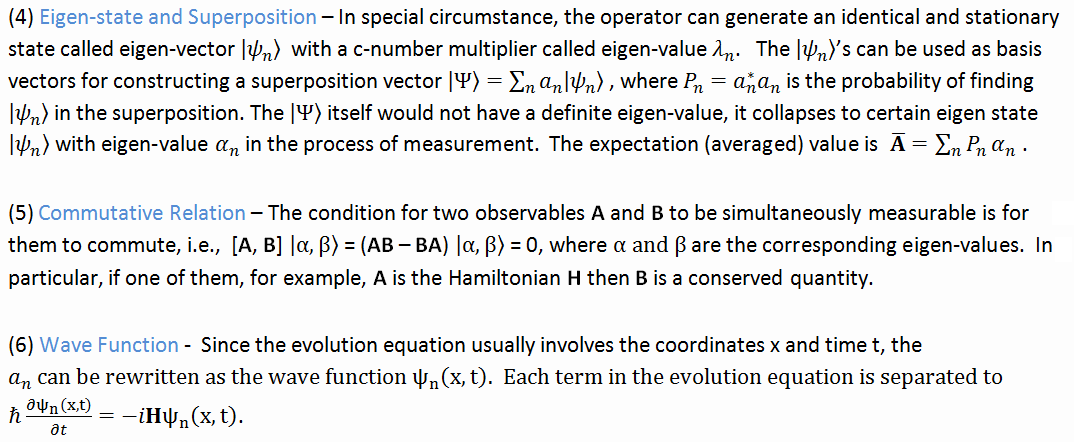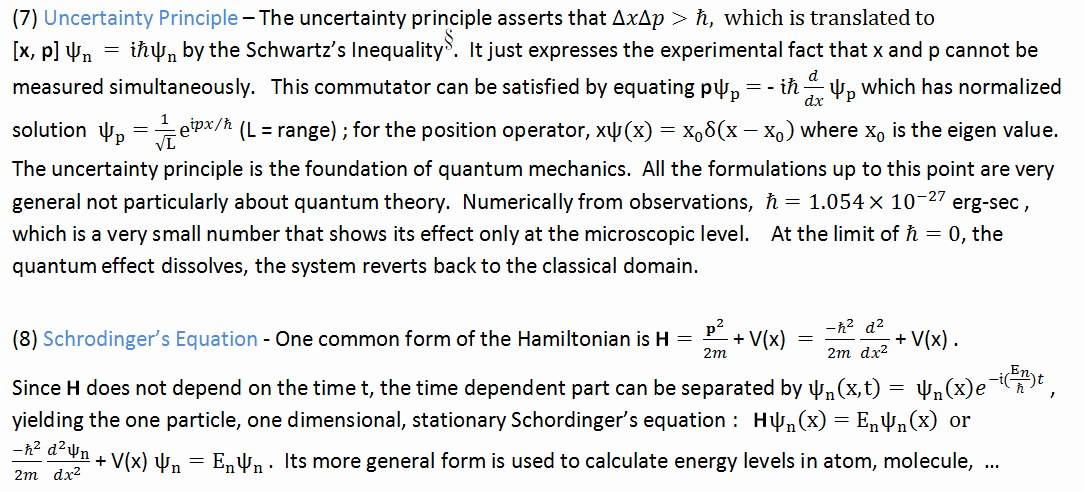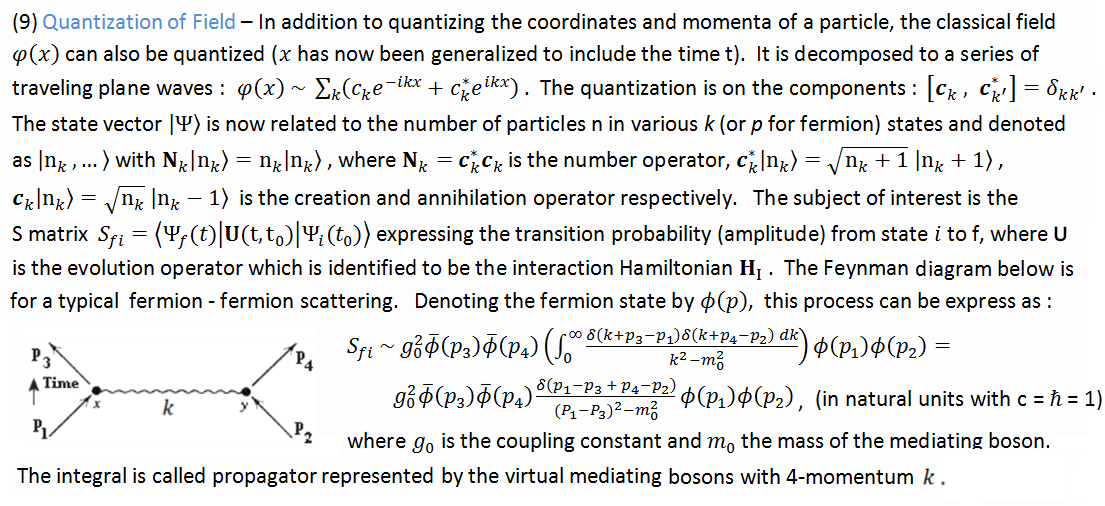 |
The one particle state in classical physics is specified by six numbers, namely three for the coordinates (x, y, z) and three more for the velocities (vx, vy, vz). Once these six variables are known, its subsequent evolution is determined by the dynamic equation, which is usually related to the Hamiltonian involving different kinds of energies such as the kinetic, magnetic, potential, and other interactions. The one particle state in quantum theory is the quantum state | >, which is related to the time, coordinates, momenta (p = mv), spin, energy, ... The | >, which is related to the time, coordinates, momenta (p = mv), spin, energy, ... The | > can be visualized as the generalization of the three dimensional vector to multi-dimensional called state vector (in the so-called Hilbert space, Figure 01b). A quantum state can involve one or more of the unit (basis) vector > can be visualized as the generalization of the three dimensional vector to multi-dimensional called state vector (in the so-called Hilbert space, Figure 01b). A quantum state can involve one or more of the unit (basis) vector
| k>, the evolution of | k>, the evolution of | > is again governed by the dynamic equation but related to the quantized version of the Hamiltonian. Thus, the deterministic nature of the system is preserved in both paradigms, however the determination is on different object. > is again governed by the dynamic equation but related to the quantized version of the Hamiltonian. Thus, the deterministic nature of the system is preserved in both paradigms, however the determination is on different object.
|



 >, which is related to the time, coordinates, momenta (p = mv), spin, energy, ... The |
>, which is related to the time, coordinates, momenta (p = mv), spin, energy, ... The | > can be visualized as the generalization of the three dimensional vector to multi-dimensional called state vector (in the so-called Hilbert space, Figure 01b). A quantum state can involve one or more of the unit (basis) vector
> can be visualized as the generalization of the three dimensional vector to multi-dimensional called state vector (in the so-called Hilbert space, Figure 01b). A quantum state can involve one or more of the unit (basis) vector  k>, the evolution of |
k>, the evolution of | > is again governed by the dynamic equation but related to the quantized version of the Hamiltonian. Thus, the deterministic nature of the system is preserved in both paradigms, however the determination is on different object.
> is again governed by the dynamic equation but related to the quantized version of the Hamiltonian. Thus, the deterministic nature of the system is preserved in both paradigms, however the determination is on different object.





 ) is always less (shorter) than or equal to the length of the vector |B| itself.
) is always less (shorter) than or equal to the length of the vector |B| itself.